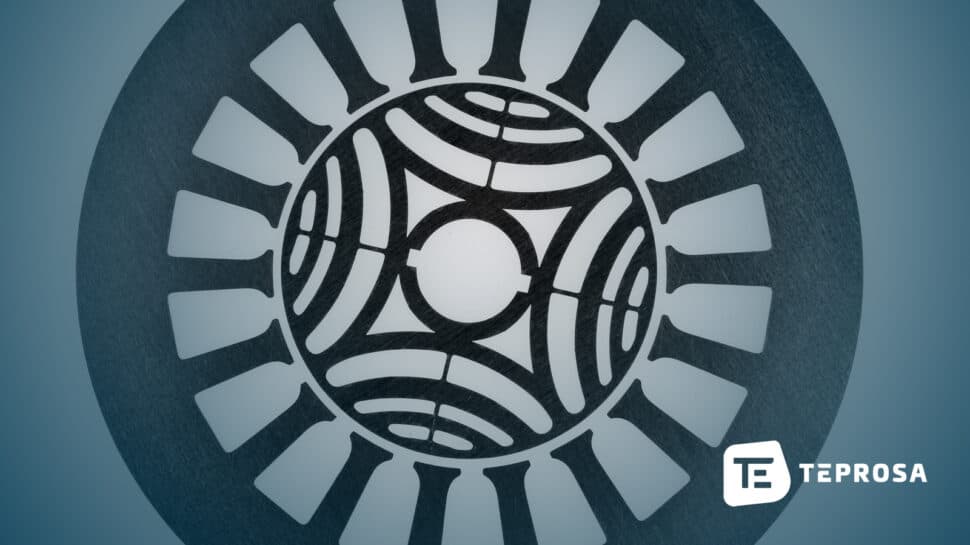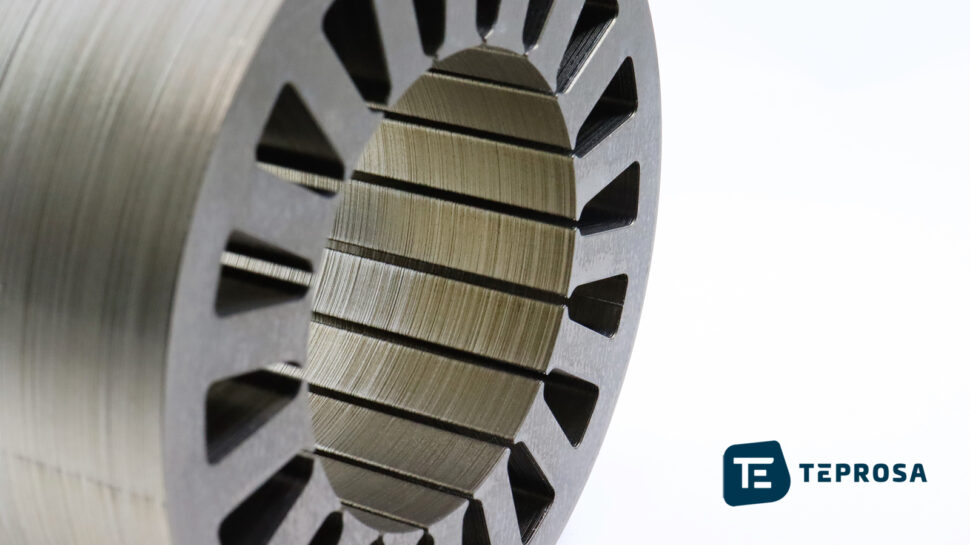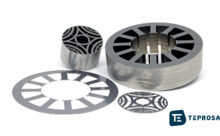In 3 steps to your individual offer for Backlack
Select the type of electrical steel and the quantity. If you already have a technical drawing, attach it right away. Then all we need is your contact details and we will send you an individual offer for your electrical sheets coated with baking varnish! If you need several different slat geometries, you can simply submit the order form several times.

1. Choose your material

2. Upload technical drawing

3. Provide contact details
Phone: 0049 (0)391 598184 70
E-Mail: anfrage@teprosa.de
Electrical steel coated with Backlack consists of an iron-silicon alloy and is divided into grain-oriented and non-grain-oriented material. The starting material is manufactured as cold strip and then painted with baking varnish. It has special physical properties and is one of the soft magnetic materials. Non-grain-oriented electrical steel is classified by DIN EN 10106. There are a variety of standard grades for use in electrical systems, motors and machines. Here you will find an overview of the materials we process at TEPROSA:
- M235-35A
- M270-35A
- M330-35A
- M270-50A
- M330-50A
- M530-50A
- M400-50A
- M800-50A
- NO20-15
- other types of electrical steel on request
Our manufacturing conditions for laser cutting
- Minimum kerf width/minimum spot diameter: 0.03 mm*
- Repeat accuracy ±2µm
- Micro-bridges from 0.03 mm (small connection between contour and sheet to anchor the blanks in the sheet composite)
- Cutting speeds up to 50mm/s
- Cutting gas support up to 25 bar
- Nitrogen
- Oxygen
- Contour accuracy: ± 0.01 mm*
*Depending on the material/material and its thickness.
Can’t find your material in our overview? We are also happy to process materials provided by you or procure appropriate materials. Upon request, you can receive all materials with the corresponding material test certificate.
We specialize in business-2-business business. Upon your request, you will immediately receive a written offer that takes all technical requirements into account. Here you will find further links and helpful information for buyers:
We would be happy to create the data for you! Simply send us a corresponding drawing or the geometric data of your laser part. Our experts will then contact you immediately.
We guarantee the security of your data – if you still need a confidentiality agreement in advance, you can download our confidentiality form >here. We would also be happy to check your in-house agreement. Please simply send this to us by email to: einkauf@teprosa.de
We take confidentiality and data security very seriously! If you would like to conclude a non-disclosure agreement, send us your form or download our template.























